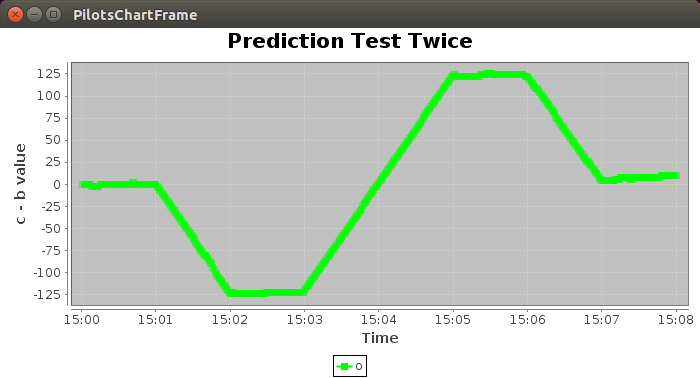
Worldwide Computing Laboratory

Department of Computer Science
Rensselaer Polytechnic Institute
In this example, a new linear regression learning model will be trained to recognize the relationship b=2a. Then, this learning model will be implemented and the learned relationship will be compared to another output, generated from c.txt, which is similar to b.txt from the Twice (simulated mode) example found from the PILOTS tutorial examples page. As such, this example will produce an output similar to the Twice (simulated mode) example.
In $PILOTS_HOME, run the build script:
$ ./build.sh // (for Windows, use build.bat instead)
After doing so, pilots.jar will be created under the $PILOTS_HOME/lib directory.
In order to make sure that aliases for the plc and plcsim compiler commands are correctly figured as well as the definition of $PILOTS_HOME, make sure that you are in the root directory of the project and then use the following command:
source setenv
In Terminal 1, run server.sh in pilots/util/model
(note: you may need to wait a few seconds for the server to start up)
Make sure that the following data files are added to data/PredictionTest_twice
In Terminal 2, make sure to call source setenv from the root directory, and then execute outputHandler in examples/PredictionTest_twice
In Terminal 3, make sure to call source setenv from the root directory, and then compile PredictionTest_twice.plt in examples/PredictionTest_twice using the command:
plcsim PredictionTest_twice.plt
In Terminal 3, compile the generated PredictionTest_twice.java in examples/PredictionTest_twice
javac PredictionTest_twice.java
In Terminal 3, execute the new PredictionTest_twice class file with the appropriate arguments. To simplify this process, execute the script PredictionTest_twice in examples/PredictionTest_twice
(Notice that the classpath is defined within this execution script.)
In Terminal 4, make sure to call source setenv from the root directory, and then (in order to produce the simulation) execute PredictionTest_twiceProducer in examples/PredictionTest_twice
In Terminal 3, press enter. (After this, some warning messages may appear in this terminal, but they do not hinder the simulation.)
If these steps are executed correctly, you should observe the following output in the Output Handler (terminal 2):

Notice that this result is very similar to the Twice (simulated mode) example. In the old example, b was the output of a, and b was explicitly defined as twice that of a. In this learning model example, c was the output of a, and c was learned to be about twice that of a.

Worldwide Computing Laboratory |

Department of Computer Science |
Rensselaer Polytechnic Institute |